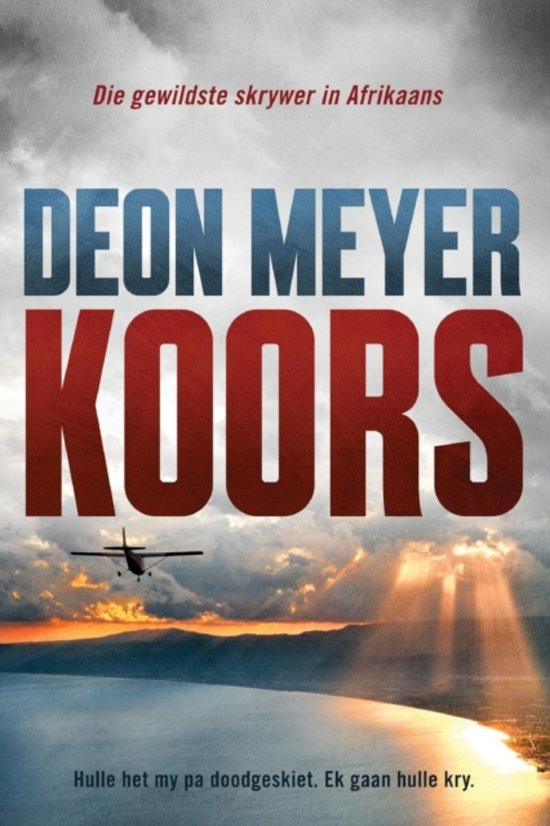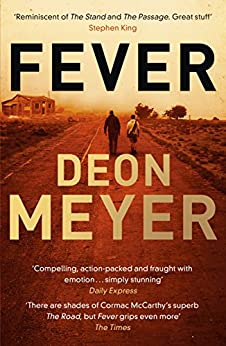‘Nature paid no heed to theories’. Did Deon Meyer predict the COVID-19 pandemic in his novel Fever? A library interview
 Fiction never foretells the future. But sometimes it comes quite close. In 2016, South African writer Deon Meyer published his novel Koors (Fever), a story about a pandemic fever raging over the world, and wiping away 95% of the population, leaving only a few people left, including father and son Willem and Nico in South Africa. Elements of the COVID-19 pandemic seem present in the book, including sentences like these: “In the mango tree there was a bat, with a different kind of corona virus in its blood.” The sentence in Afrikaans is as telling: “In die veselperskeboom sit ‘n vleermuis, met ‘n ander sort koronavirus in sy bloed”. Two staff members of the ASCL Library, ardent fans of Deon Meyer’s novels, interviewed Meyer by email.
Fiction never foretells the future. But sometimes it comes quite close. In 2016, South African writer Deon Meyer published his novel Koors (Fever), a story about a pandemic fever raging over the world, and wiping away 95% of the population, leaving only a few people left, including father and son Willem and Nico in South Africa. Elements of the COVID-19 pandemic seem present in the book, including sentences like these: “In the mango tree there was a bat, with a different kind of corona virus in its blood.” The sentence in Afrikaans is as telling: “In die veselperskeboom sit ‘n vleermuis, met ‘n ander sort koronavirus in sy bloed”. Two staff members of the ASCL Library, ardent fans of Deon Meyer’s novels, interviewed Meyer by email.
 Koors was seemingly different in subject from your other work. You also spoke to virology experts at the time. What sparked your interest?
Koors was seemingly different in subject from your other work. You also spoke to virology experts at the time. What sparked your interest?
‘In Koors I wanted to explore a world after a virus decimated the world population, and not so much the pandemic itself. But stories of characters’ chaotic experience during the spread of the virus sort of kept creeping into the book, which forced me to research the nature of pandemics, and try and imagine what it would be like to live through one.
For the specific fictional post-apocalyptic world I wanted to create, I needed to kill off 95% of the world population, but leave all infrastructure intact. My research for the novel was done after the occurrence of the Avian Influenza (H5N1) of 1996 and the H1N1 Swine Flu virus of 2009-2010. These two terrifying scares, as well as the constant outbreaks of Ebola in Africa, gave me the idea to explore the possibility of a virus as the reason for my needed apocalypse.
I started my search for a world-class expert on viruses, and found one in Prof. Wolfgang Preiser, chief of Medical Virology at Stellenbosch University’s Department of Pathology. The magnanimous and indulgent professor not only played along enthusiastically, but called upon his illustrious colleague Prof. Richard Tedder of University College London to help. They identified the corona virus as the best candidate (although they said my figure of 95% was way too pessimistic), and gave me full details on how it could happen, which I included extensively in the novel:
A man somewhere in tropical Africa lay down under a mango tree. The man’s resistance was low, because he was HIV-positive and not being treated for it. There was already one corona virus in the man’s blood. There was nothing strange about that. Corona viruses were quite common. In the era before The Fever they knew of at least four that caused flu and cold symptoms in people.
Corona viruses also occurred in animals. Mammals and birds.
In the mango tree there was a bat, with a different kind of corona virus in its blood.
The bat was sick. Diarrhoea caused it to defecate on the face of the man under the tree, his eyes, or his nose, or his mouth. The second corona virus was now in the man’s blood, the two viruses multiplying together in the same cells of the man’s windpipe. And their genetic material combined. A new corona virus was born – one that could infect other people easily when inhaled, and with the ability to make them extremely ill.
The man under the mango tree lived in a poor community, where people were crammed together, and where the incidence of HIV was high. He quickly infected others. The new virus spread through the community, and kept on mutating. One mutation was just perfect. It spread easily through the air, taking long enough to kill for each person to have infected many others.
One of the family members of the man under the mango tree worked at an airport in the nearby city. The family member was incubating the perfect virus. He coughed on a passenger, just before the woman took the flight to England.
In England there was a big international sporting event.
All the first world countries had a protocol for deadly, infectious diseases. Even most of the developing countries had extensive plans for such an incident. There were guidelines and systems for an epidemic. In theory, these should have worked.
But nature paid no heed to theories. And nor did human fallibility.
So, it really was professors Preiser and Tedder who were the visionaries, and not me.’
Looking at the health situation in South Africa at this moment, are you surprised by some of the things happening?
‘I am not only surprised by what is happening in South Africa, but around the world too. How can one not be — this is a first in our lifetime, in this connected, social media driven world.
But the thing that delights me most is how South Africans have been united, and are reaching out to each other.’
 Writers and artists are sometimes supposed to be able to foresee the future better than other people. Koors is now perceived as a prediction of the coronavirus pandemic. How do you look back on writing the book?
Writers and artists are sometimes supposed to be able to foresee the future better than other people. Koors is now perceived as a prediction of the coronavirus pandemic. How do you look back on writing the book?
‘As I said, the real visionaries were professors Preiser and Tedder - and so many other scientists who warned us, but we did not take them seriously. All I did was to extrapolate their information, and try to imagine a pandemic and its aftermath. I must admit that I find no pleasure in having anticipated what is happening now. There is just too much pain for people who have lost loved ones under very difficult circumstances. My daughter lives in Italy (she is safe and healthy, I’m happy to report), my mother is almost 90 years old, so I have much to worry about.’
Jos Damen and Ursula Oberst
Deon Meyer, Fever: the memoirs of Nicolaas Storm, concerning the investigation of his father's murder. London : Hodder & Stoughton, 2017
Deon Meyer, Koors: die memoires van Nicolaas Storm, oor die ondersoek na die moord op sy pa. Kaapstad : Human & Rousseau, 2016.
Photo author: Krimidoedel / CC BY

